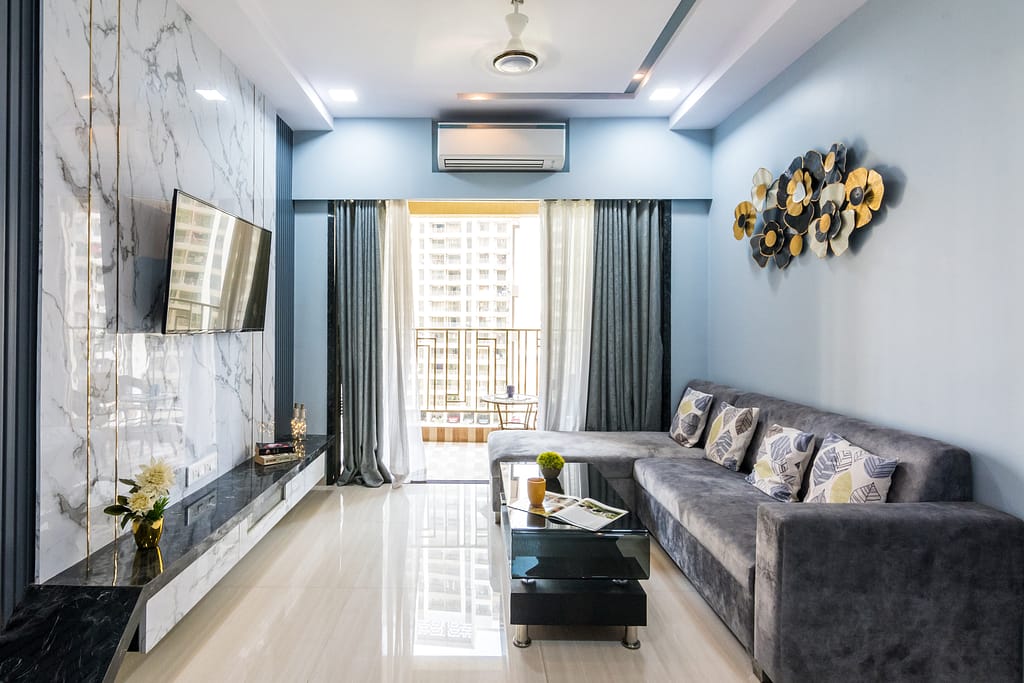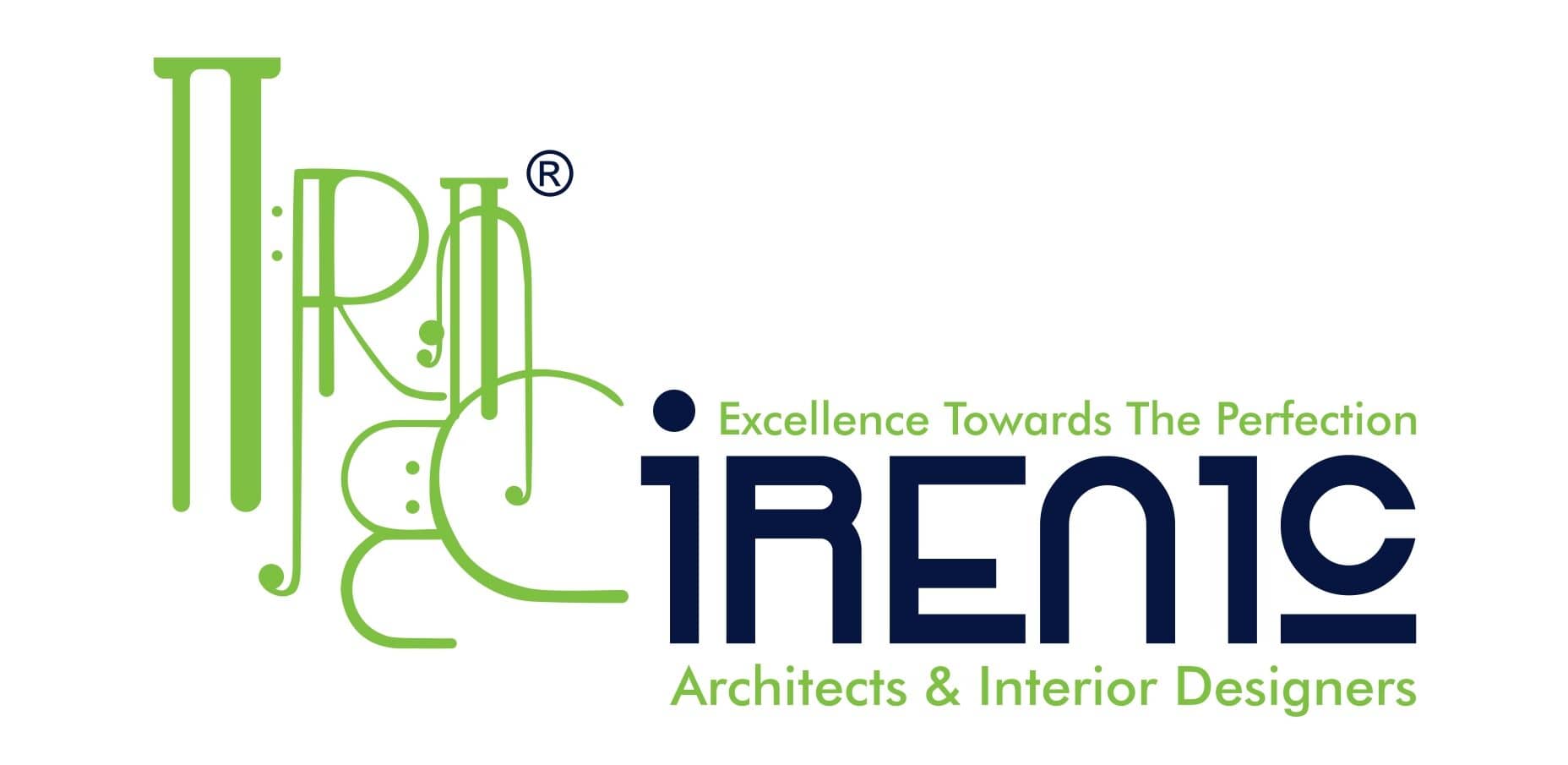The choice of Interior Design Styles is crucial in achieving the ideal atmosphere in your house or place of work. It’s important to select a style that fits your personality and way of life, not just because it looks good. We at Irenic Architects & Interior Designers are aware that every style has its own distinct flare and ideology. Whether you prefer the clean lines of contemporary design or the homey atmosphere of traditional décor, choosing the appropriate interior design style may turn your house into a refuge that embodies your unique tastes and comfort levels. Your design trip will be joyful and easily stylish thanks to our guide, which will lead you through the most popular trends.

The Top 5 Interior Design Styles
The scope of interior design styles provides plenty of options for expressing uniqueness and taste in home decor. Modern design’s crisp, uncomplicated lines contrast with Traditional designs’ sumptuous fabrics and cozy atmosphere, each offering a special method of designing a room that is both useful and aesthetically beautiful. This examination of the top five interior design styles will help you determine which most closely aligns with your particular preferences in addition to introducing you to each style’s distinctive traits. Comprehending these fundamental types is the first stage to designing a room that feels genuinely unique, regardless of whether you’re remodeling your house or simply seeking a new look.
Modern Interior Design Style
Key Characteristics
Simplicity in Form and Function: Clean, uncomplicated lines and an uncluttered appearance define modern home design.
A neutral color palette: That includes tones of white, beige, and gray is frequently used in this design.
Natural Materials: Commonly used materials with a natural yet elegant vibe include stone, wood, and leather.
Open Space Concept: Airy, open areas that frequently flow seamlessly across rooms are preferred in modern design.
Minimalist Decor: Decorations are minimal, with an emphasis on a select few statement-making elements.
Focus on Lighting: Modern light fixtures that are as much works of art as they are useful add to the abundance of natural light.
Ideal Settings for Modern Design
Modern interior design, a specialty of Irenic Architects and Interior Designer, is ideally suited for those who appreciate the beauty of simplicity and order in their home interior design. This style works exceptionally well in urban settings like apartments and lofts, where its clean lines and open spaces can create a sense of calm amidst the hustle and bustle of city life. However, it’s not limited to urban environments; modern design can also bring a fresh, contemporary feel to suburban homes. The key is in the thoughtful application of the style’s principles – from the strategic use of neutral colors to the incorporation of natural materials. In essence, modern interior design is about creating spaces that are not only aesthetically pleasing but also highly functional, reflecting a lifestyle that values both form and efficiency.

Traditional Interior Design Style
Key Characteristics
Rich Color Palettes: Traditional design often features deep, warm colors, creating a cozy and inviting atmosphere.
Elegant Furnishings: Furniture in traditional interior design is characterized by its detailed craftsmanship and classic shapes.
Symmetry and Balance: This style emphasizes a harmonious and balanced arrangement of furniture and decor.
Decorative Details: Ornate decorations, including patterns, prints, and textures, are a hallmark of traditional design.
Layered Textiles: The use of various textiles like silk, velvet, and brocade adds depth and luxury.
Classic Art and Antiques: Traditional spaces often showcase classic art pieces and antiques, adding a sense of history and timelessness.
Ideal Settings for Traditional Design
Traditional interior design, a forte of Irenic Architects and Interior Designer, is perfectly suited for those who cherish a sense of history and elegance in their home interior design. This style is particularly fitting for older homes where its rich colors and detailed furnishings can complement the architectural features. However, it’s not just limited to historic homes; traditional design can also add warmth and character to newer spaces, creating a timeless feel. The key to successfully implementing traditional interior design lies in balancing the rich, decorative elements with the functional aspects of the space, ensuring that it remains comfortable and livable. Whether in a grand country estate or a cozy suburban home, traditional design creates an atmosphere of refined comfort, making it a perennial favorite among various Interior Design Styles.

Bohemian Interior Design Style
Important Features
Unique Combination of Patterns and Colors: The bohemian style is characterized by a lively and unique combination of patterns, colors, and textures.
Global Influences: This look frequently combines aspects from several civilizations, such as Southwestern, Moroccan, and Indian patterns.
Layered Textiles: To create depth and coziness, bohemian homes are adorned with a range of textiles such as pillows, carpets, and blankets.
Antique and Handmade things: A key component of bohemian décor is the addition of antique, handcrafted, or artisanal things.
Plants and Natural Elements: A bohemian ambiance requires a lot of greenery and natural elements.
Decorative and Personalized Details: Bohemian style promotes individuality and frequently includes artwork, pictures, and sentimental objects.
Ideal Settings for Bohemian Design
Bohemian interior design, embraced by Irenic Architects and Interior Designer, is ideal for those who desire a home that reflects their adventurous and eclectic spirit. This style is particularly well-suited for spaces that are meant to feel relaxed and inviting, such as living rooms, bedrooms, and artist studios. The beauty of Bohemian interior design lies in its flexibility; it can be adapted to various settings, from urban apartments to rural homes. By blending a variety of textures, patterns, and colors, Bohemian design creates a space that is not only visually stimulating but also deeply personal. It’s a style that allows for the freedom of expression and a break from conventional Interior Design Styles, making it perfect for those who want their home interior design to be a true reflection of their unique personality and lifestyle.

Industrial Interior Design Style
Key Characteristics
Inspired by urban lofts and warehouses, industrial interior design is characterized by a raw, edgy look. This design has an overall urban vibe and is distinguished by exposed brick walls, metal accents, and visible plumbing. Natural reds or browns from natural woods and metals are frequently used with grays, whites, and blacks to create a color scheme that heavily emphasizes neutral tones. When a building’s structural components are not only left exposed but also appreciated, industrial design finds beauty in embracing its messy, unfinished appearance. Typically made of recycled or repurposed materials, this kind of furniture is straightforward but nonetheless useful. To accentuate the industrial atmosphere, the lighting is usually harsh and basic, with floor lamps or metal pendant lights.
Proper Environments for Industrial Design
Loft apartments, business spaces, and any environment that inherently has architectural elements like exposed beams, high ceilings, or concrete flooring are especially well-suited for the industrial design aesthetic. Its capacity to turn these spaces into fashionable and useful areas has helped this design become more and more popular. Residential spaces such as kitchens and even bedrooms can benefit from the distinctive and modern touch that industrial design provides. In order to create a cozy and welcoming place, it’s important to strike a balance between the tough, raw materials and more delicate furniture and interior decor. Individuals that value a minimalist approach to interior design for their homes but yet desire a room with personality and a narrative to tell, tend to like this design.

Minimalist Interior Design Style
Key Characteristics
Minimalist interior design is the epitome of the “less is more” philosophy, focusing on simplicity and functionality. This style is characterized by clean lines, a monochromatic color palette, and a lack of clutter. The color scheme typically involves neutral tones, with whites, beiges, and greys dominating the space, creating a serene and tranquil atmosphere. Furniture in minimalist design is sleek and often features geometric shapes, chosen for its functionality and form rather than decorative purposes. Decorations are kept to a minimum, with a focus on quality over quantity. Every element in a minimalist space is intentional, serving a purpose or bringing joy. This design style also emphasizes open spaces and natural light, which helps to create a sense of calm and order.
Ideal Settings for Minimalist Design
Minimalist interior design is versatile and can be applied in various settings, from urban apartments to modern homes. This style is particularly appealing for smaller spaces, where its emphasis on simplicity and organization can make the area feel larger and more open. In larger homes, minimalist design can create a sense of luxury and sophistication, with spacious rooms that are free of clutter and unnecessary decorations. For those who value a stress-free, uncluttered lifestyle, minimalist interior design offers a way to create a peaceful retreat from the busy world. It’s a popular choice among Interior Design Styles for its ability to blend aesthetics with practicality, making it a perfect fit for modern home interior design. This style resonates with those who seek a home that is both a sanctuary and a statement of personal style.

Combining Different Styles of Interior Design
Mixing and matching various interior design styles may be a fun and creative approach to make your place uniquely your own, expressing your own tastes and preferences. When combining multiple styles, it’s critical to choose a unifying feature that unites the various designs, such as a color scheme or material. Balance is essential. For example, contrasting the opulent details of classic decor with the sleek lines of modern interior design can produce an eye-catching contrast. Selecting a dominant style to serve as a base and accentuating other styles’ aspects is also advantageous. This method keeps the area from appearing disorganized or fragmented. Furthermore, adding heirlooms and personal artifacts to your home’s interior design can give it a touch of uniqueness and coziness.
Conclusion
Irenic Architects and Interior Designers investigation of Interior Design Styles reveals a wide variety of styles, each with its own distinct beauty and usefulness. Each style offers unique opportunities for customizing your space, from the sleek and practical Modern Interior Design to the rich and elegant Traditional Interior Design; the colorful and eclectic Bohemian Interior Design to the raw and edgy Industrial Interior Design; and the calm and uncluttered Minimalist Interior Design. There is a style to suit every taste, whether you like the aggressiveness of industrial design, the simplicity of modernity, the coziness of traditional décor, the free-spiritedness of bohemian, or the serenity of minimalist design.
FAQs
What are the main differences between Modern and Minimalist Interior Design?
Can Industrial and Bohemian styles be effectively combined?
How can I incorporate Traditional Interior Design in a modern home?
What are some tips for beginners trying to identify their preferred Interior Design Style?
Is it possible to change a room’s style without a complete overhaul?

